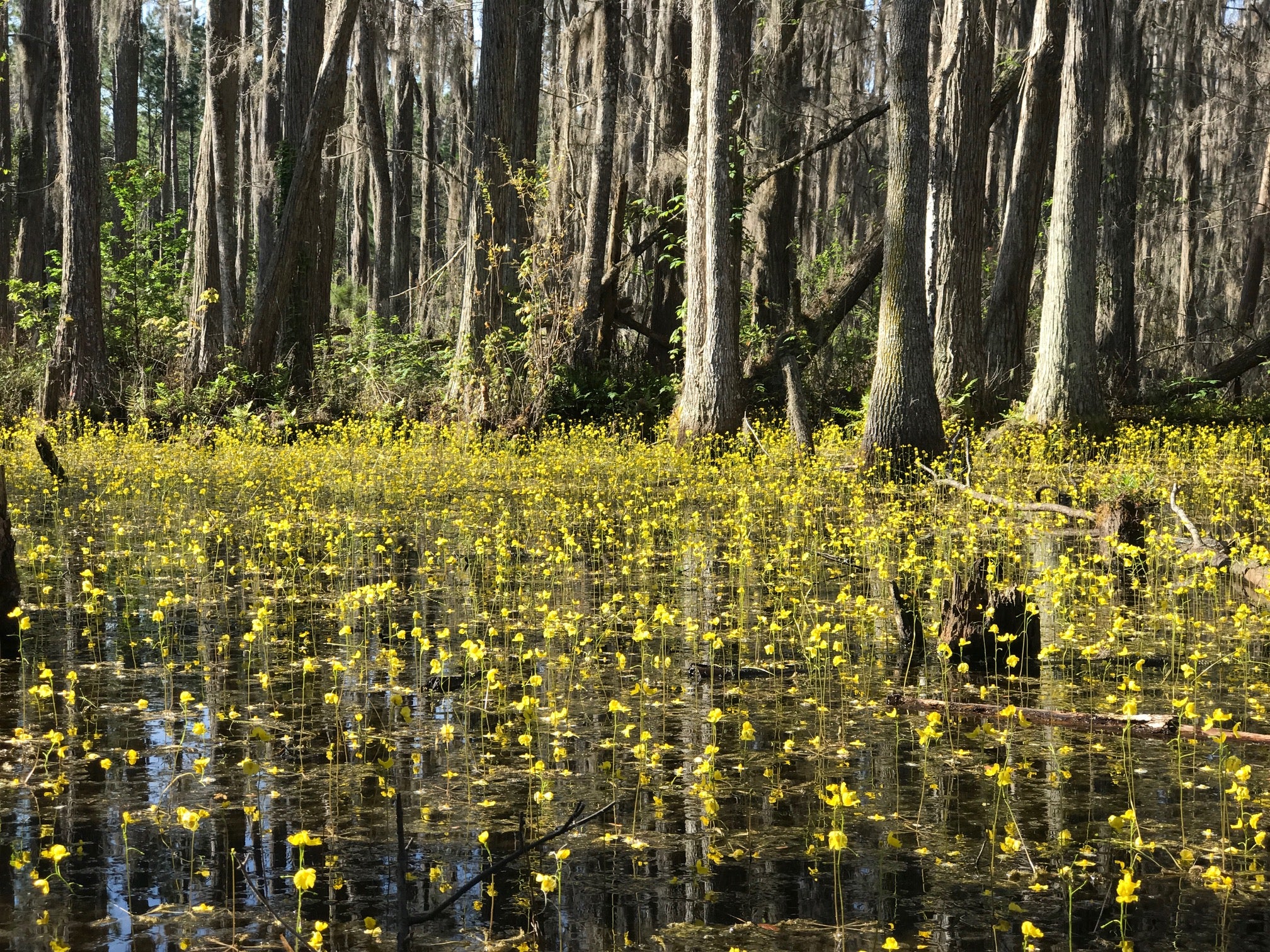As you ride along the Gainesville-Hawthorne State Trail in the cooler weather of February or March taking in the beauty of nature, it’s hard to miss the unmistakable flashes of yellow that dot one of the trail’s adjacent wetlands. At first glance, these small flowers may not seem like much, but look closer and you’ll see a unique plant – bladderworts.
There are 14 species of bladderworts found in Florida. These plants have no roots but instead possess long stems that extend below the water's surface. Leaves grow out of the stems, and it is on these leaves that their namesake “bladders” grow. These bladders are key to understanding what makes these tiny plants unique – they’re carnivorous!

Underwater, the bladders are small pouches that lie in wait. When a tiny fish or invertebrate swims by, it brushes against miniscule hairs on the bladder’s opening, triggering the bladder to snap open and quickly suck water inside. Any creatures unfortunate enough to get sucked in are slowly digested by bacteria living inside the bladder. Doesn’t sound like much fun for the fish, but it works out well for the bladderwort!
Bladderworts usually live in water with very little nutrients. That makes it difficult for them to survive on energy produced only from photosynthesis, the process that allows plants to turn sunlight into energy. By consuming other organisms, bladderworts get energy from other sources as well, allowing them to grow in nutrient-poor wetlands.
While most of the species in Florida have yellow flowers, some are a lovely lavender color. These flowers are sources of nectar for insects like bees, which in turn help the plants reproduce by spreading their pollen from plant to plant. So while they may look unassuming as you glide by on the Gainesville-Hawthorne State Trail, bladderworts have their own role to play in the dynamic landscape of …the Real Florida.
